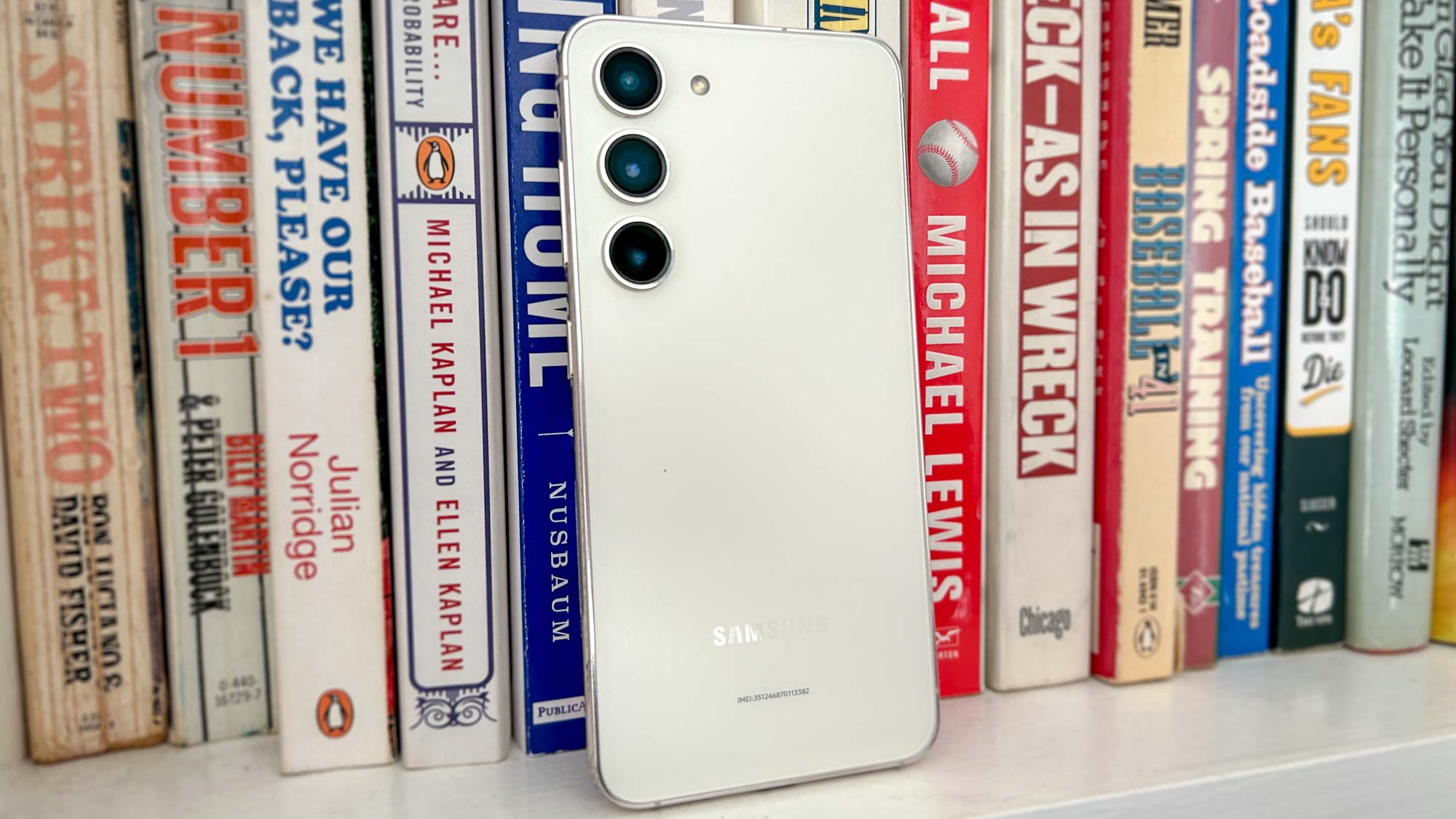Snapdragon 8 Gen 2 benchmarks: How Galaxy S23 and OnePlus 11 stack up to the iPhone
Here's what we found after testing the Snapdragon 8 Gen 2

We're already halfway through March, which means that we have received the first devices with the new Snapdragon 8 Gen 2 chipset in for testing. It's an interesting story this year as Qualcomm tries to catch up to Apple Silicon's raw power in the iPhone 14 Pro.
If you've paid attention what's going on with the Galaxy S23 series, then you would know that there are technically two Snapdragon 8 Gen 2 variants on the market. There's the standard one found in handsets like the OnePlus 11, but then Samsung managed to score a special overclocked version dubbed Snapdragon 8 Gen 2 for its Galaxy phones.
Now that we've gotten in a few Snapdragon 8 Gen 2 phones in for testing, we have enough data to definitively declare how the new chip that powers, or will power, many of the best Android phones stacks up to its competition and its predecessor(s).
Snapdragon 8 Gen 2 vs. the competition
We run every phone through a suite of benchmarks to gauge performance, so we'll start with the CPU itself before looking at the GPU.
| Row 0 - Cell 0 | CPU | Geekbench 5 (single-core / multicore) | Geekbench 6 (single-core / multicore) |
| Galaxy S23 | Snapdragon 8 Gen 2 for Galaxy | 1522 / 4876 | 1881 / 4972 |
| OnePlus 11 | Snapdragon 8 Gen 2 | 1166 / 4962 | 1536 / 5035 |
| RedMagic 8 Pro | Snapdragon 8 Gen 2 | 1496 / 5217 | 2020 / 5621 |
| Pixel 7 Pro | Tensor G2 | 1060 / 3046 | N/A |
| iPhone 14 Pro Max | A16 Bionic | 1882 / 5333 | N/A |
| iPhone 14 | A15 Bionic | 1727 / 4553 | N/A |
| Zenfone 9 | Snapdragon 8 Plus Gen 1 | 1190 / 4061 | N/A |
| Galaxy S22 | Snapdragon 8 Gen 1 | 1204 / 3348 | N/A |
Geekbench 6 is a very recent test, so most devices in our lab have not run through it yet. But Geekbench 5 is where we can truly look at things across chipsets. Among the Snapdragon 8 Gen 2 phones, there's a wide gap in both single-core and multicore results.
For example, the Galaxy S23's overclocked Snapdragon 8 Gen 2 for Galaxy beats the standard version in single-core performance, considerably so in the OnePlus 11's case. But the RedMagic 8 Pro, a gaming phone with a powerful cooling system, wins in multicore, coming dangerously close to the iPhone 14 Pro Max.

I found it interesting that Qualcomm finally surpassed Apple, at least a two-year-old chip. (The A15 Bionic deputed in the iPhone 13 series and the iPhone repurposes the iPhone 14 Pro's higher-end chip.)
Get instant access to breaking news, the hottest reviews, great deals and helpful tips.
Out of all the options listed above, the Pixel 7 Pro stands out as the weakest. Its Tensor G2 system-on-chip isn't meant to win any performance crowns, since Google places its focus on AI and machine learning. And to be fair, the latest Pixels run laps around other phones for AI features.
I included some of 2022's flagships in here to show you the generational performance, both with the Snapdragon 8 Plus Gen 1 and Snapdragon 8 Gen 1. There's some startlingly clear improvements here.
| Row 0 - Cell 0 | CPU | Adobe Premiere Rush (Mins:Secs) |
| Galaxy S23 | Snapdragon 8 Gen 2 for Galaxy | 0:39 |
| OnePlus 11 | Snapdragon 8 Gen 2 | 1:11 |
| RedMagic 8 Pro | Snapdragon 8 Gen 2 | N/A |
| Pixel 7 Pro | Tensor G2 | 0:47 |
| iPhone 14 Pro Max | A16 Bionic | 0:30 |
| iPhone 14 | A15 Bionic | 0:28 |
| Zenfone 9 | Snapdragon 8 Plus Gen 1 | N/A |
| Galaxy S22 | Snapdragon 8 Gen 1 | 0:47 |
Geekbench tests are all well and good, but they don't provide much real-world value. The results are only good for comparing phones to each other, but what do those actually mean?
That's why we run an Adobe Premiere Rush transcoding test as a way to gauge real-world performance. It's a good test where a phone must transcode a 4K video file to 1080p as quickly as it can.
Apple still clearly leads the pack with the iPhone 14 turning in the fastest result of 28 seconds. The iPhone 14 Pro Max is right there behind it at 30 seconds, effectively a statically insignificant difference.
Apple clearly leads the pack, but Qualcomm is closer than ever.
The OnePlus 11 is an outlier among the Snapdragon 8 Gen 2 phones, but that was the case with the OnePlus 10 Pro last year, too. The app would not launch on the RedMagic 8 Pro or Zenfone 9, so we cannot include those results here.
However, the Snapdragon 8 Gen 2 sees a notable improvement over the Snapdragon 8 Gen 1, since the Galaxy S22 took 47 seconds to complete the test. The Pixel 7 Pro achieved the exact same result.
So CPU performance sees a noticeable improvement across the board, and even comes close to Apple in Geekbench, but what about the GPU?
| Row 0 - Cell 0 | CPU | 3DMark Wild Life (FPS) | 3DMark Wild Life Extreme Unlimited (FPS) |
| Galaxy S23 | Snapdragon 8 Gen 2 for Galaxy | 87 | 23 |
| OnePlus 11 | Snapdragon 8 Gen 2 | 84 | 22 |
| RedMagic 8 Pro | Snapdragon 8 Gen 2 | 84 | 22 |
| Pixel 7 Pro | Tensor G2 | 40 | 11 |
| iPhone 14 Pro Max | A16 Bionic | 74 | 20 |
| iPhone 14 | A15 Bionic | 69 | 18 |
| Zenfone 9 | Snapdragon 8 Plus Gen 1 | 58 | 14 |
| Galaxy S22 | Snapdragon 8 Gen 1 | 59 | 15 |
We put each phone through 3DMark Wild Life Unlimited and the more grueling Wild Life Extreme Unlimited to test the GPUs. This is where things get truly interesting, because Samsung takes a clear lead over anything else, even the iPhone 14 Pro Max. It achieved a max of 87 frames per second (fps) in Unlimited, which is the best we've ever seen from a smartphone. Even its result of 23 fps in Extreme Unlimited is impressive, even if it is just slightly better than the other devices.
Both the OnePlus 11 and RedMagic 8 Pro aren't far behind at 84 fps. The iPhone 14 Pro Max lagged quite a bit at 74 fps, even though a human is not likely to notice that difference. But that means that the Galaxy S23 is the best gaming phone on the market right now. Meanwhile, the Pixel 7 Pro is not.
Even better, the Snapdragon 8 Gen 2 shows incredible improvement over both the Snapdragon 8 Plus Gen 1 and Snapdragon 8 Gen 1. Color me impressed with that generational leap, which is normally unheard of.
Snapdragon 8 Gen 2 for Galaxy: Does it make a difference?
Based on these results, is Samsung right in hyping up its special overclocked Snapdragon 8 Gen 2?
For reference, the Snapdragon 8 Gen 2 for Galaxy sports a base clock speed of 3.36GHz versus the regular Snapdragon 8 Gen 2's 3.3GHz. That does appear to pay off in the graphics department especially, though by a margin that no human could perceive without metrics counters.
Interestingly enough, the RedMagic 8 Pro's results in Geekbench show that keeping the Snapdragon 8 Gen 2 cool lets it boost higher for longer without throttling back for heat's sake.

In fact, both the OnePlus 11 and RedMagic 8 Pro beat out the Galaxy S23 in Geekbench CPU performance, in both versions 5 and 6. That leads me to believe that the cooling systems, be it passive or active, in either handset negate the Galaxy S23's 160MHz advantage.
However, the Galaxy S23's gaming lead is not to be ignored. It might be a small one, but it does technically give the S23 series the crown as the kings of gaming phones.
So back to my original question: Is Samsung's hype for the Snapdragon 8 Gen 2 for Galaxy worth anything? As anticlimactic as it might be to hear, it depends.
If gaming is your primary metric, then yes. If you're not as concerned with gaming, then it's moot. You could save some money and get the OnePlus 11 ($699) to get equal, if not better, CPU performance — outside of OnePlus' weird compatibility with our Adobe Premiere Rush benchmark.
The iPhone 14 Pro Max is still the CPU king, however, and yet, most people don't need all of that raw horsepower.
Snapdragon 8 Gen 2 outlook
After years of falling behind, Qualcomm has finally narrowed the gap with Apple Silicon. The Snapdragon 8 Gen 2 is the best gaming chip available at time of writing, even if the A16 Bionic still holds the lead in Geekbench and 4K-1080p video transcoding.
This is the first year in a long time where I can say that you won't notice much a difference between a Snapdragon Android phone and an iPhone. The Pixel 7 Pro and its Tensor G2 is another story, but I already outlined that it's not meant to be the fastest chipset available.
Basically, you can buy any Snapdragon 8 Gen 2-powered phone this year and be confident that you're holding the most power that Android has ever seen in a handset. We have yet to see what the A17 Bionic will do, but I suspect Apple will put an emphasis on the GPU.
2023 has already started to shape up as an awesome year for smartphone performance. If Qualcomm releases a Snapdragon 8 Plus Gen 2, things could get even more interesting.
The Snapdragon 8 Gen 2 surely impressed me, far more than I expected, even more so as I laid out this article. I hope to see Qualcomm continue to catch up to Apple, and it may just happen.

Jordan is the Phones Editor for Tom's Guide, covering all things phone-related. He's written about phones for over six years and plans to continue for a long while to come. He loves nothing more than relaxing in his home with a book, game, or his latest personal writing project. Jordan likes finding new things to dive into, from books and games to new mechanical keyboard switches and fun keycap sets. Outside of work, you can find him poring over open-source software and his studies.
